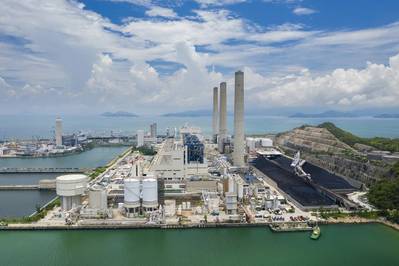China Can't Meet Its US Energy Commitments
The more you delve into the details of China's commitment to buy an additional $52.4 billion in U.S. energy over the next two years, the more it becomes apparent the goal is unachievable, even with the best will in the world.
As part of the "Phase 1" trade truce between Beijing and Washington, China undertook to buy energy over and above a $9.1 billion baseline of U.S. imports in 2017, with a split of an extra $18.5 billion in 2020 and $33.9 billion in 2021.
In practical terms this means China's imports from the United States this year would have to be more than double past record monthly imports of U.S.-sourced crude oil, liquefied natural gas (LNG) and coal.
If that already seems difficult, it would take a tripling of the best-ever months to meet the 2021 target.
Before even thinking about the logistics and disruptions to global trade flows that such a massive shift would entail, there is one major factor that would need to change before China even starts to ramp up purchases of U.S. energy.
As part of the earlier tit-for-tat tariffs, China imposed a 5% import tax on U.S. crude, 25% on LNG and 25% on coal.
These tariffs alone make any imports of U.S. energy uncompetitive, and therefore unlikely unless Beijing is prepared to use its muscle to force state-owned oil refineries, natural gas utilities and steelmakers to pay higher than market rates for U.S. cargoes.
There is so far no sign that Beijing is about to remove the tariffs, or issue waivers, and without this the expected ramp-up in purchases of U.S. energy is a non-starter.
Even assuming Beijing does lower the tariffs or issue waivers, then comes the problems of logistics and refinery configurations that have to be dealt with before crude oil imports can be ramped up.
If China boosted imports of U.S. crude to more than 1 million barrels per day (bpd) - worth around $21.4 billion at the current price of West Texas Intermediate futures - it would present a challenge in physically moving that amount of oil from the U.S. Gulf coast to China.
Given that a very large crude carrier (VLCC) holds about 2 million barrels, it would mean 15 of these vessels making the trip every month.
While U.S. export terminals may be able to handle this volume, there remain questions over the availability of these vessels and the potential costs of sailing them back empty to the United States to pick up more cargoes.
VLCCs are also too big to transit the Panama Canal, likely meaning a longer sea voyage around the bottom of Africa, adding to costs.
The economics of shipping crude on smaller vessels that can transit the Panama Canal are also challenging, given such ships can hold only around 600,000 barrels and would have to pay the relatively high canal fees.
Then there is the question of whether China's refineries can use the volumes of U.S. crude that would be required to meet the terms of the deal.
Many Chinese refineries are optimised to process heavy, sour grades of crude, such as those from the Middle East, rather than the lighter, sweet oil typically exported by the United States.
China does import light crude, taking some 270,000 bpd from the United Kingdom last year, 235,000 bpd from Malaysia, 152,000 bpd from Libya and 44,000 bpd from Nigeria, according to Refinitiv data.
That isn't an exhaustive list of the light crude bought by China, but it does show that light grades are a relatively small percentage of the 10.2 million bpd China imported in 2019.
If China were to buy more than 1 million bpd of U.S. crude, it would have to stop buying most of the light crude it now gets from other countries.
Not only would this disrupt global trade flows and relationships, it also raises the question as to whether Chinese refiners, and U.S. crude exporters, would want to become so reliant on each other, rather than having a diverse range of trading partners.
LNG, coal could work
The logistics around LNG and coal are more feasible, with the United States having plenty of LNG available for export, although there may be some restrictions on coal capacity.
However, doubling, or even tripling, the flow of U.S. LNG and coal to China presents problems from a disruption perspective, and it's unlikely that countries that compete - such as Australia for coal and LNG, and Qatar for LNG - will simply surrender market share for the convenience of U.S. President Donald Trump.
The main question for the energy component of the Phase 1 trade agreement should be what happens when the targets inevitably fall well short of the stated commitment?
Perhaps Trump has lost the November election by then and his successor takes a different path in relations with China, or perhaps Trump wins and then decides to cancel the already fairly limited deal, or perhaps everybody just ignores the issue.
(Editing by Tom Hogue)

